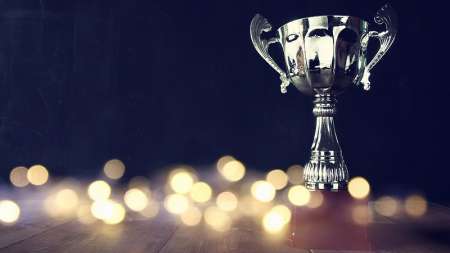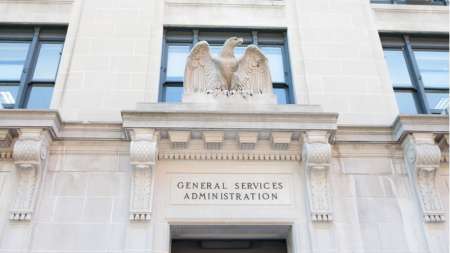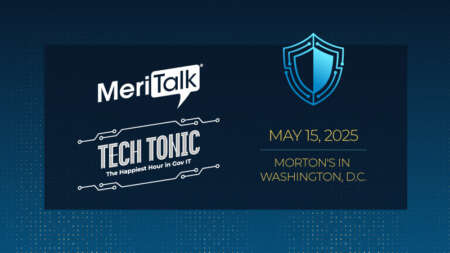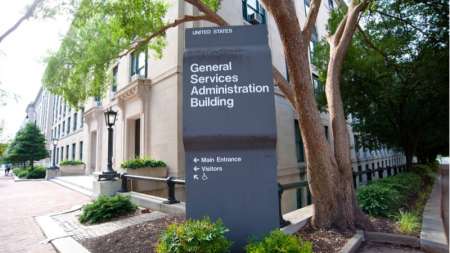The Service to the Citizen Awards Program has announced its 2025 award winners that include senior officials from U.S. Customs and Border Protection, the Social Security Administration, and Adobe – among many others from Federal and state government and the private sector. […]
With a March presidential executive order putting some breathing room between the Federal government and states on cybersecurity protections – and state and local governments hoping for a second go-round of funding from Congress under the 2021 State and Local Cybersecurity Grant Program (SLCGP) – we checked in with Gary Barlet, Illumio’s public sector chief technology officer, for his read on the new landscape. […]
If you knew what we know – but just can’t quite say out loud yet – then you’d hit the go-button today to join us at Tech Tonic on July 17 from 5 p.m. to 9 p.m. at Morton’s the Steakhouse in Washington, D.C. […]
Federal agencies continue to prioritize cybersecurity in their data strategies, but many are falling short of the visibility, agility, and integration required to meet today’s threat landscape, according to new research from MeriTalk and NetApp. […]
The General Services Administration (GSA) said today that Elastic – which provides search, observability, and security functions through its Elastic Search AI Platform – will be offering deep discounts to Federal government agencies through September 2027 under GSA’s OneGov program. […]
Who’s going to take home the hardware in this year’s MeriTalk AI Honors Awards? We’re going to find out at Tech Tonic on July 17 from 5 p.m. to 9 p.m. at Morton’s the Steakhouse in Washington, D.C., and you’re invited to the celebration! […]
Cloud security provider Zscaler, Inc., said it has earned key competencies under the Amazon Web Services (AWS) Government Competency – part of the broader AWS Competency Program – that recognizes AWS partners with expertise and experience in delivering mission-critical solutions to government agencies. […]
Artificial intelligence tools have been a “game changer” for the Office of the Director of National Intelligence (ODNI), with Director of National Intelligence Tulsi Gabbard saying today that AI is helping the intelligence community (IC) to get after its core mission. […]
As Federal agencies navigate tighter budgets and faster technological change, cross-skilling has emerged as a strategic lever to drive efficiency, agility, and mission delivery. Rather than rely on narrow specializations, cross-skilling enables agencies to build teams with competencies that span domains like cloud, cybersecurity, and data analytics. […]
General Dynamics Information Technology (GDIT) has made several new leadership appointments as part of an expansion of the company’s centers of excellence (COE) that focus on artificial intelligence, cyber, and mission software. […]
The head of the General Services Administration’s (GSA) Federal Acquisition Service (FAS) is asking 10 large value-added resellers (VARs) to the Federal government for a detailed breakdown of their open contracts with an aim to develop “taxpayer friendly pricing” for the government. […]
MeriTalk recently sat down with Kynan Carver, senior director, cybersecurity, at Maximus, to discuss the growing cyber threat landscape, strategies for implementing multi-layered defenses, and how automation and advanced tools like artificial intelligence (AI) and machine learning (ML) are aiding disaster response. […]
Cloud security provider Zscaler, Inc., has secured Level 2 certification under the U.S. Department of Defense’s (DoD) Cybersecurity Maturity Model Certification (CMMC) framework. […]
The Justice Department, along with Microsoft and international partners, has disrupted the infrastructure of a popular cybercrime tool known as “Lumma Stealer,” according to Microsoft’s Digital Crimes Unit (DCU). […]
The General Services Administration (GSA) announced on Monday a cost-saving agreement with Salesforce to offer Slack Enterprise Grid at a temporary price reduction of 90 percent, along with an almost 70 percent off Slack AI for every Federal agency. […]
Top cybersecurity professionals from across the Federal government and industry gathered on Thursday evening at Morton’s in Washington, D.C., to honor the 2025 Cyber Defenders Award winners. […]
As Federal systems integrators (FSIs) navigate increasingly complex modernization efforts, digital maturity has emerged as both a strategic goal and an operational necessity. In a recent MeriTalk Coffee Talk interview, Mike Watkinson, chief revenue officer at Future Tech, offered an insider’s view into how FSIs are evolving their IT lifecycles, harnessing data, and building lasting partnerships to enable mission-driven outcomes. […]
Federal agencies are modernizing cybersecurity through zero trust architecture, but siloed tools, sprawling data, and budget constraints often complicate the journey. Achieving visibility across five distinct zero trust pillars – identity, device, network, application, and data – requires an integrated approach that many legacy environments lack. […]
The 2025 class of Cyber Defenders is stepping out to take a bow at Tech Tonic on May 15 from 5 p.m. to 9 p.m. at Morton’s The Steakhouse in Washington, D.C., and you are invited to join in the celebration. […]
Federal government human resources (HR) leaders are sending a clear message: modernizing workforce management is no longer optional. According to new research from MeriTalk and Workday, inefficiencies tied to outdated government HR systems are significantly hindering Federal mission success and draining nearly $1 billion in productivity annually. […]
In a recent conversation, experts from General Dynamics Information Technology (GDIT) explored the numerous potential benefits digital engineering offers to Federal defense, civilian, and intelligence organizations. […]
The General Services Administration (GSA) and Adobe have announced a new agreement to offer a Paperless Government Solution at a 70 percent discount through Nov. 30 as part of GSA’s drive to reduce software costs across the government. […]
Tyto Athene, a Reston, Va.-based Federal systems integrator, said today it completed the acquisition of stackArmor, Inc., which provides compliance acceleration solutions across a wide range of Federal government policy requirements. […]
The Office of Personnel Management (OPM) – which acts as the human resources services arm of the Federal civilian government – has awarded a sole-source, one-year contract to Workday, Inc., to roll out a new cloud-based human capital management system for the agency with a delivery date prior to mid-July. […]
Breaking news! MeriTalk is delighted to celebrate the 42 technology security stalwarts that make up the 2025 class of Cyber Defenders! […]
The big reveal for MeriTalk’s 2025 class of Cyber Defenders is almost here, and that means it’s time to clear your decks for Tech Tonic on May 15 at Morton’s The Steakhouse in Washington, D.C., from 5 p.m. to 9 p.m. when we will honor the winners with an evening of networking and fun. […]
Cybercriminals are using generative AI (GenAI) to craft targeted phishing attacks against high-impact business functions that evade traditional defenses, according to a new report from the cybersecurity platform provider Zscaler. […]
The majority of Americans are concerned about cuts to the Federal workforce and government services, according to new polling data from the nonprofit Partnership for Public Service (PPS). […]
In a recent interview with MeriTalk, Aaron Mulgrew, solutions architect at Everfox, examines the governmental imperative for safeguarding sensitive data amid widespread AI adoption. […]
As Federal agencies experiment with cloud financial management – also known as FinOps – experts at Apptio’s 2025 Public Sector Summit on April 22 advised them to start small and lay a scalable foundation. […]

